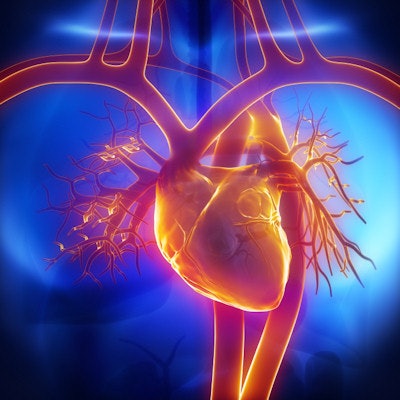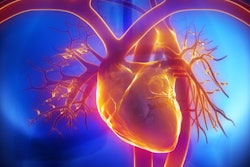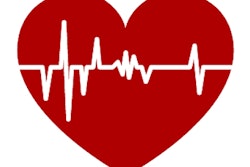
A stress test with cardiac MRI (CMR) can do more than simply assess heart function. The modality's findings can also predict which patients are most likely to have a fatal outcome within five years, according to a study published online February 8 in JAMA Cardiology.
After following more than 9,000 patients for up to 10 years, researchers from seven U.S. medical centers found that patients with an abnormal cardiac MRI stress test were 3.4 times more likely to die than patients with a normal scan. The disparity held true even after adjustments were made for age, gender, and cardiac risk factors.
"These findings suggest that stress CMR has broad prognostic significance regardless of patient age, symptoms, or risk factors," wrote the group led by Dr. John Heitner from NewYork-Presbyterian Brooklyn Methodist Hospital. The results also "provide a foundational motivation to study the comparative effectiveness of stress CMR against other modalities."
Previous studies and meta-analyses have found that cardiac MRI stress imaging is more accurate for the diagnosis of coronary artery disease than other conventional stress imaging methods. Despite these findings, the modality is involved in less than 0.1% of all imaging-based stress tests performed in the U.S., according to the U.S. Centers for Medicare and Medicaid Services.
"The limited use of stress CMR is likely due to multiple factors, including availability of good quality laboratories, exclusion of patients with ferromagnetic devices, and a lack of data on patient outcome," Heitner and colleagues noted. "The prognostic value of stress CMR has been reported in relatively small single-center studies with few hard events and short follow-up times."
To better evaluate the efficacy of cardiac MRI stress tests, the researchers enrolled 9,151 consecutive patients (mean age, 63 years; range, 51-70 years) undergoing their first cardiac MRI stress test for suspected myocardial ischemia. Exams were performed on a 1.5- or 3-tesla MRI scanner and included three components:
- Cine imaging to examine regional left ventricular wall motion
- Stress and rest perfusion imaging to determine ischemia
- Late gadolinium enhancement imaging to detect myocardial infarction and/or scar
Of the 9,151 patients, 4,408 (48%) had a normal cardiac MRI stress result, compared with 4,743 (52%) abnormal exams. During a median follow-up time of five years, 1,517 patients (16%) died, which represented an overall annual mortality rate of 3.1%.
In all scenarios, cardiac MRI stress results were the key predictor of mortality.
| Stress cardiac MRI as predictor of mortality | ||
| Normal cardiac stress MRI | Abnormal cardiac stress MRI | |
| Mortality risk | 0.8%-2.7% | 2.7%-4.9% |
When the researchers adjusted for age, gender, and cardiac risk factors, they found a statistically significant association between an abnormal stress cardiac MRI and mortality among all patients. The statistically significant difference was evident among patients with or without a history of coronary artery disease, as well as patients with normal left ventricular ejection fraction (LVEF) and those with abnormal LVEF.
Based on the results, the researchers concluded that cardiac MRI works as well as or better than other exams at identifying heart wall motion, cell death, and the presence of low blood flow. MRI also has the added benefit of no radiation exposure to patients, compared with nuclear stress tests that are far more commonly utilized in the U.S.



.fFmgij6Hin.png?auto=compress%2Cformat&fit=crop&h=100&q=70&w=100)




.fFmgij6Hin.png?auto=compress%2Cformat&fit=crop&h=167&q=70&w=250)











